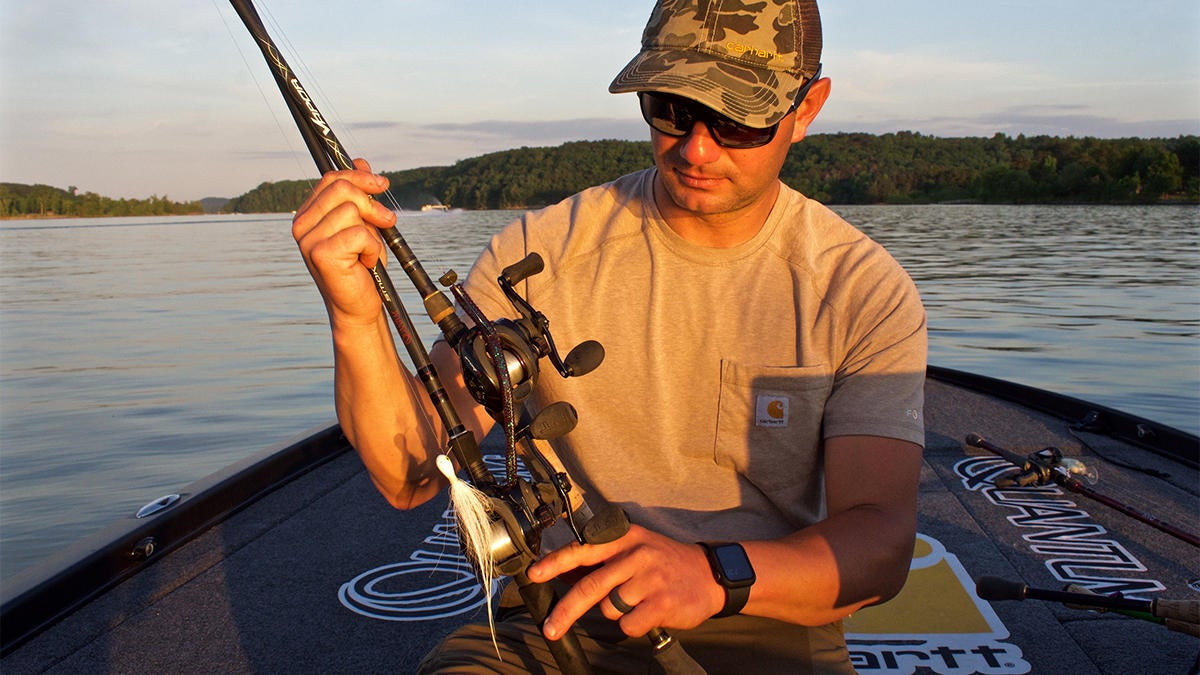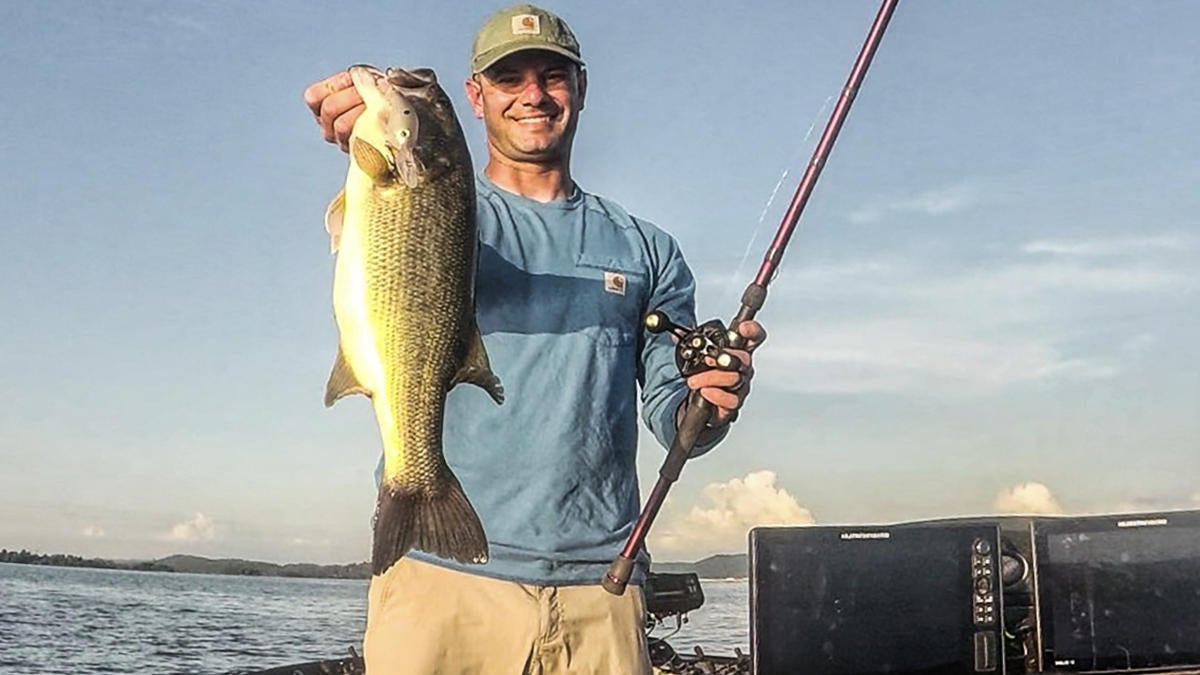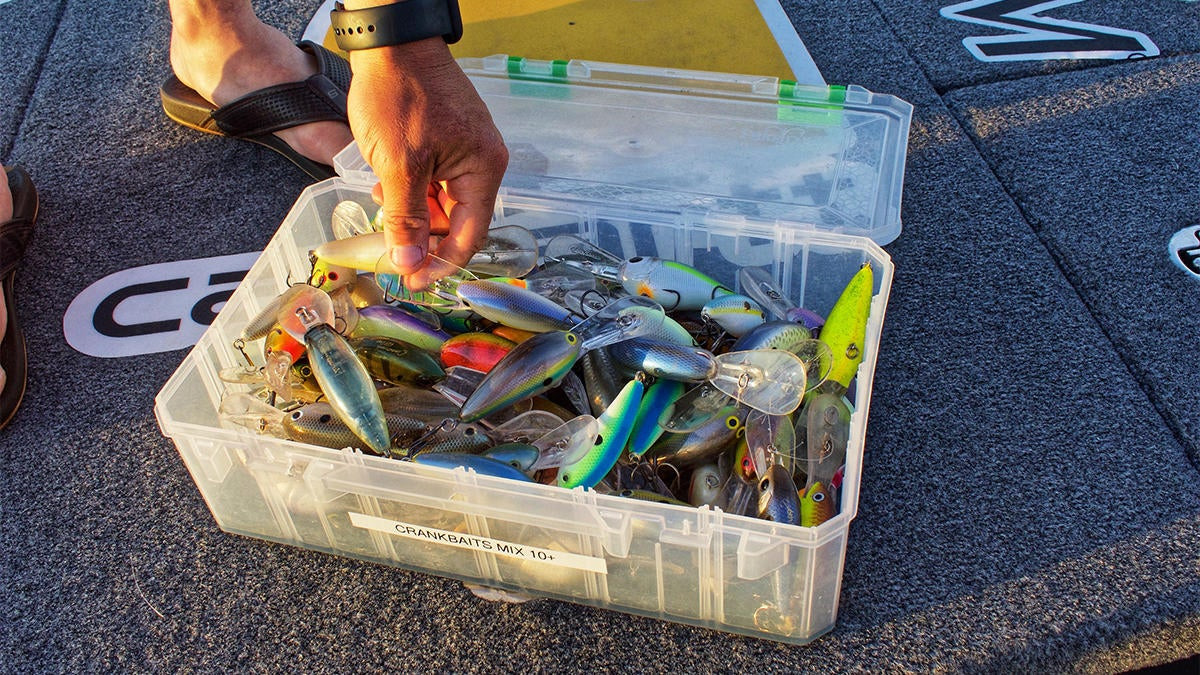It’s summertime and bass are showing up in their usual offshore haunts. While some fish never leave the shallows, a large majority migrates offshore to brush piles, underwater humps, ledges, points or underwater channel swings. Like clockwork, as bass move to deeper water many anglers will follow suite and you’ll start to notice more boats floating away from the bank.
Some fishermen love “deep” fishing while others struggle to understand it, but there are undoubtedly more anglers targeting bass offshore right now than ever before. More people on the water fishing is a great thing for our sport but fishing pressure affects bass in 20 feet of water just like it does in two feet.
Professional angler Matt Lee spends his spare time as a fishing guide on legendary offshore fishery Lake Guntersville when he isn’t traveling for competition. Lee has seen the influence of more boats and anglers fishing for off-the-bank bass first hand; and whether he is fishing for $100,000 or working a guide trip, Lee has learned to adjust his strategy to exploit summertime schools of bass.
“Times have changed in terms of offshore fishing and our methods need to change as well,” Lee said. “These days a lot of anglers have high-end electronics and understand how to find traditional deep spots. This has led to an increase in fishing pressure and smarter bass.”

Adapting to fishing pressure
Growing up I didn’t know the first thing about deep fishing but in my mind, I envisioned using deep-diving crankbaits on schools of untouched bass like I saw Kevin VanDam do on TV. I’ve come to learn deep fishing is similar to any other kind of bass technique; it’s entirely situational and is affected by different water conditions.
“Finding a school of bass offshore used to be the hard part,” Lee explained. “Once you found them, it seemed like they were usually pretty willing to bite whatever you threw. Nowadays finding a school is only half the battle. You still have to trick those fish into biting which is getting harder and harder.”
Lee finds fish by idling likely locations and looking at his Humminbird electronics. After he locates a school of bass, Lee weighs several factors before deciding upon the rotation of lures he is going to show the fish. How much current is present? What is the water clarity and angle of the sun? Are these fish likely to have been found and fishing for by another angler?
All these considerations (and more) help guide Lee to maximize his efficiency on a particular group of fish. Traditional summertime fishing wisdom says to start with something fast before opting for slower presentations to see if any active fish are aggressively feeding on the spot. But the past few years Lee has found more success by first using a subtle approach.
“Start with something less intrusive when you find a school of offshore bass,” Lee said. “I think bass have become so wary that sometimes a loud, aggressive lures can spook them. Starting subtle allows you to kind of sneak up on them almost like you are hunting.”

Sneak up on them
Lee’s offshore lure rotation now starts off with something subtle like a big shaky head or Texas rig. This allows Lee to test the mood of the fish and ideally exciting the school before throwing the kitchen sink at them.
“The key to starting subtle is it allows you to fire the school before they know you are there,” Lee said. “Once you have the fish fired up they are much more likely to eat a deep plug or a magnum spoon, but lots of times you have to get them excited first.”
Lee’s subtle lineup includes dragging a Zoom Mag Finesse Worm on a 1/2-ounce shaky head, silently fluttering a 3/4-ounce hair jig and finesse offerings like a Strike King Dream Shot on a 3/8-ounce drop shot. Not only is Lee confident these presentations aren’t as likely to alert bass of his presence, but they’ll get a lot of bites from fish of all sizes, too.
“Throwing smaller, subtle lures right off the bat doesn’t mean you can’t catch big bass,” Lee said. “I’ve had plenty of guide trips where a less experienced angler fishing a drop shot will catch numerous big ones while his avid buddy throwing a bigger bait can’t find the same quality.”
More than just lures, Lee uses his trolling motor to sneak up on schools of bass. Instead of using his outboard motor to idle right up to a spot, Lee will use his trolling motor to ease up to the area. Giving him every opportunity to put a bait in front of a school of fish before they are aware of his presence.

Crankbait smorgasbord
Whether he’s caught a few fish from a school and fired them up, or his electronics shows the bass are extremely active Lee will employ a plethora of different deep-diving crankbaits. He begins rotating through different plugs based on their diving depth, color, size and sound they emit.
“Typically I’ll start out with something loud like a Strike King XD series or a Bomber Fat Free Shad,” Lee offered. “If there is less current or the fish are acting shy I’ll lean on a Rapala DT series or a SPRO Little John DD 70. Try to read the fishes’ mood and keep swapping plugs until you find what they want to eat.”
Varying retrieve speed and cadence remains a great way to trigger a bite with deep-diving crankbaits and is something Lee practices religiously. The Quantum Fishing pro uses a mid-speed 6:1:1 Smoke S3 Reel so he can alternate between a blistering fast and slower retrieve.
“Burning a deep crankbait and dredging the bottom is a big deal in the summertime,” Lee said. “The fishing industry has seen a big shift to folks liking super fast, 8:1:1 reels and personally I think these high speed reels overwork a deep crankbait. I still like a mid-speed reel so I can still move the bait as fast I was want to, but allow the action of the lure to still work at depth.”
Change is the name of the game for Matt Lee when it comes to sneaking up on and tricking lure-shy offshore bass into biting. As more anglers take to the water to chase fish and our methods cause these fish to adapt to increased pressure, be sure to give Lee’s tips and tactics a try and continue to change right along with the fish.












